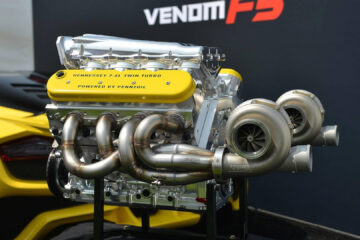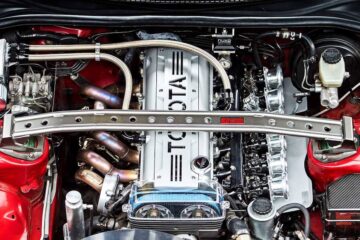Engines are built to last. With proper care, many modern internal combustion engines can run smoothly for 200,000 miles or more. But while some reach high mileage with ease, others fail catastrophically before 100,000. Why?
The most common suspects in early engine failure are three critical components: oil, the timing system, and pistons. Each plays a vital role in engine longevity. But which is truly responsible for premature wear and death? And which problems are simply symptoms of deeper neglect?
Let’s take a closer look at how these components function, how they fail, and what really brings an engine to its knees ahead of schedule.
Oil: The First and Final Line of Defense
When it comes to engine longevity, oil is arguably the most essential fluid in the vehicle. It lubricates moving parts, reduces heat through friction reduction, suspends contaminants, and protects metal surfaces with a thin film that prevents direct contact.
Most engine failures, though not immediately obvious, begin with poor oil maintenance. Using the wrong oil grade, going too long between oil changes, or ignoring oil level warning signs can have devastating effects. The consequences often begin subtly—like gradual wear on camshaft lobes or a noisy timing chain—and progress toward catastrophic results, such as a spun bearing or complete seizure.
One of the most dangerous situations is oil starvation. In performance driving or aggressive cornering, oil may shift away from the pickup tube, leading to temporary—but deadly—lubrication loss. Even a few seconds of this can destroy crankshaft bearings or overheat a piston. Sludge buildup from skipped oil changes can clog oil galleries, silently starving key engine areas over time.
Unlike a sudden failure, oil-related problems are cumulative. They wear down the engine over thousands of miles, rarely giving immediate warning until it’s too late. That’s what makes oil negligence the most insidious killer—it’s slow, silent, and often entirely avoidable.
Timing Chains and Belts: When Precision Turns Fatal
The engine’s timing system—whether driven by a chain or belt—keeps the camshaft and crankshaft perfectly synchronized. Without this harmony, intake and exhaust valves can open at the wrong time, sometimes directly into the path of a rising piston. The result is a loud, expensive, and sometimes fatal meeting of metal components.
While belts are designed to be replaced at intervals, typically between 60,000 and 100,000 miles, timing chains were traditionally considered “lifetime” components. In reality, many timing chains wear out due to oil neglect, cheap materials, or flawed tensioning systems. Chain stretch is a common issue, often caused by dirty oil or excessive heat, which can lead to misfires, poor performance, or even total mechanical failure.
Many modern engines rely on plastic timing chain guides and hydraulic tensioners—both of which are vulnerable to wear or oil pressure fluctuations. When guides break down or tensioners collapse, the chain may jump a tooth or even derail entirely.
In interference engines (which most modern engines are), such failure often results in the valves smashing into pistons at high speeds. This level of internal damage is rarely repairable and often results in complete engine replacement.
Though not as frequent a failure point as oil-related wear, the timing system can kill an engine instantly—and often without prior warning.
Pistons: Strong, But Not Invincible
Pistons endure extraordinary conditions. They compress air and fuel, ignite combustion, and transfer that energy through the connecting rods to the crankshaft—all while operating at extreme temperatures and pressures. Under ideal conditions, pistons can last for the lifetime of the engine. But when things go wrong elsewhere, pistons are often the first to suffer.
One of the main causes of piston failure is detonation, or engine knock. This occurs when combustion happens too early or too violently, creating shockwaves that can crack piston crowns or break ringlands. High-performance engines are especially vulnerable to this when tuned aggressively or fed poor-quality fuel.
Another frequent piston killer is overheating. When an engine runs hot—due to cooling system neglect, hard driving, or poor tuning—the pistons may expand beyond tolerance. This can cause them to scuff cylinder walls, seize in their bores, or deform under pressure.
Oil starvation plays a role here too. Without a sufficient oil film, pistons and cylinder walls grind against each other, wearing down both surfaces. Even if the engine doesn’t fail immediately, loss of compression and excessive blow-by often follow. Over time, the engine becomes smoky, underpowered, and oil-hungry.
Importantly, piston failure is usually a symptom rather than a root cause. It reflects issues higher up the chain—overboosting, overheating, detonation, or lubrication problems—not piston weakness itself. They’re durable, but they can’t survive systemic neglect.
It’s Never Just One Thing
Although oil, timing components, and pistons are individually vital, engines rarely fail due to a single isolated issue. In most real-world failures, problems accumulate over time.
Take for example an engine where oil changes are frequently skipped. The oil thickens with contaminants, reducing its flow and protective qualities. This neglect wears down the timing chain guides and tensioner, allowing slack to form. The chain stretches slightly, just enough to throw off timing. Eventually, the valves begin opening a fraction too early or late, leading to minor knock or detonation. That extra stress—combined with high combustion temperatures—pushes the pistons to their limit. They crack or seize, and the engine dies.
What seems like piston failure was actually a slow-motion collapse that began with something as basic as oil neglect.
Likewise, a failing water pump might cause overheating. A minor hot spot develops on a piston. Meanwhile, a dirty injector creates a lean mixture in one cylinder. These factors together cause knock, which destroys the piston in minutes. The engine’s final failure is dramatic, but the path to it was paved gradually.
That’s the real lesson: internal combustion engines are tightly integrated systems. A failure in one part causes cascading stress throughout. It’s rarely a single blow, but a domino effect of ignored warnings and poor upkeep.
Driving Habits: The Invisible Factor
Even with perfect maintenance, how a car is driven has a massive impact on its engine’s life. Unfortunately, most engines are not destroyed in racing—they’re worn down during daily commutes and short city trips.
When a driver frequently makes short trips without allowing the engine to reach full operating temperature, moisture from combustion doesn’t fully evaporate. Over time, this moisture dilutes the oil, increases sludge formation, and promotes rust in sensitive areas. The engine seems fine until, one day, it isn’t.
Similarly, drivers who ignore warming up the car before heavy throttle applications put huge thermal and mechanical stress on internal parts. Cold oil is thicker, reducing lubrication. Metal components haven’t yet expanded to their proper tolerances. The result is faster wear—especially to pistons, camshafts, and bearings.
Rough driving on a cold engine, consistently redlining, or frequently lugging the engine at low RPM under load can all add thousands of invisible micro-injuries to an engine over time. These aren’t catastrophic at first—but their effects accumulate.
Modern Engines: High Performance, Low Tolerance
Engines today are marvels of precision engineering, with tighter tolerances, higher specific output, and complex management systems. But that very complexity makes them less forgiving of poor maintenance or bad habits.
Modern engines often feature turbochargers, direct injection, variable valve timing, and advanced emissions systems. Each of these requires clean, high-quality oil and precise temperature control. Sludge, low oil pressure, or improper fuel quality can damage turbo bearings, clog injectors, or foul timing actuators.
In the past, older engines like the Toyota 22RE or Chevy 350 could tolerate rough treatment. Their lower compression and simpler designs made them resilient, if not particularly efficient. Today’s engines don’t allow that luxury.
A modern 2.0-liter turbocharged engine might produce 250+ horsepower—but push it too hard with poor oil, and its high-strung internals won’t survive for long. Today’s engines deliver more—but demand more, too.
The Overlooked Killers
While oil, timing, and pistons get the spotlight, there are other silent killers:
- Coolant neglect can lead to corrosion inside the cylinder head or block, eventually blowing a head gasket.
- Fuel system problems—like low injector pressure or dirty fuel—can cause lean mixtures and pre-ignition.
- PCV system failures result in crankcase pressure buildup, forcing oil past seals or even damaging piston rings.
- Air intake leaks can let in unmetered air, throwing off the fuel-air ratio and triggering knock.
- Cheap aftermarket filters often allow fine dust into the engine, which slowly scores cylinder walls and valve seats.
These threats are often dismissed as minor, but over years of driving, they quietly erode the engine’s health.
Keeping Your Engine Alive Beyond 300,000 Miles
Here’s your engine survival checklist:
- Change oil every 5,000–7,000 miles (or sooner under hard use)
- Use manufacturer-recommended oil and filters
- Monitor oil level monthly
- Replace timing belts on schedule (and inspect chains for noise or stretch)
- Use high-quality fuel
- Keep cooling system flushed and topped off
- Let the engine warm up before pushing it
- Address check engine lights immediately
- Avoid aggressive driving when cold
- Use OEM or high-quality aftermarket parts
Conclusion: So, What Really Kills Engines?
Engines don’t die because of one part—they die because of how they’re treated.
Poor oil habits open the door. Timing components silently wear out in the background. Pistons take the final blow. Along the way, small decisions—delayed oil change, cheap fuel, skipping a warning light—pile up until the engine simply can’t take it anymore.
The good news? Most of this is preventable. With attention, discipline, and mechanical empathy, your engine can easily outlast the car it came in.
Because in the end, engines don’t just die—they’re killed.







0 Comments